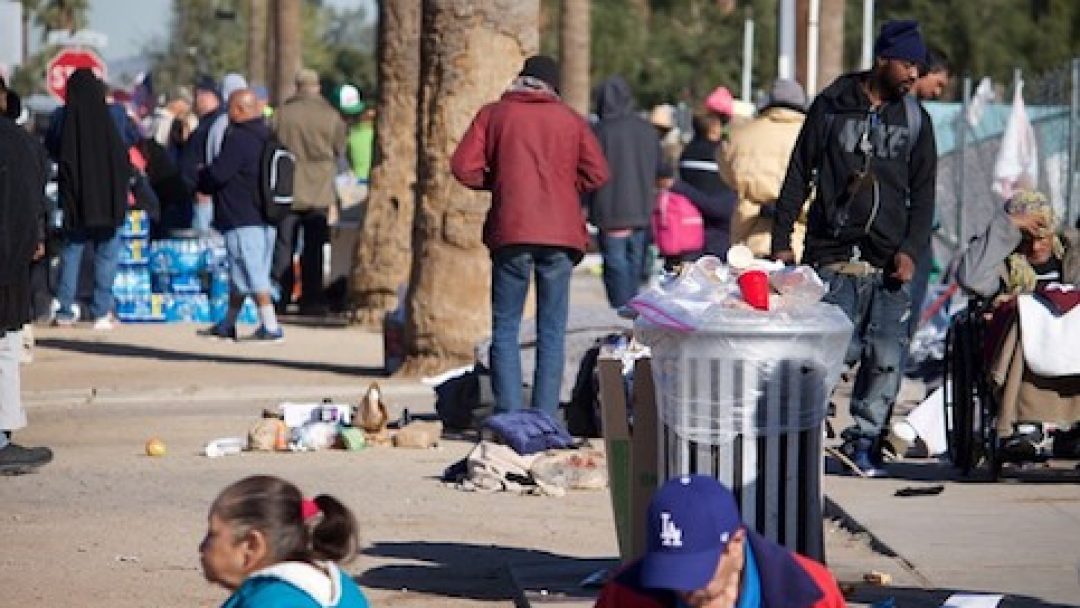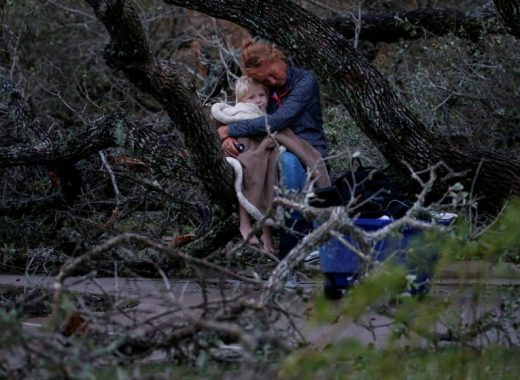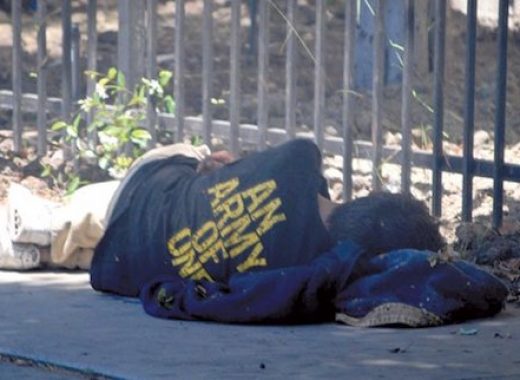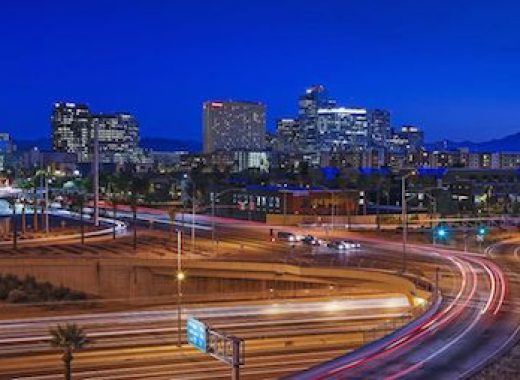Homelessness in the Phoenix area has seen a 12 percent rise compared to the previous year, according to a federal report.
Released Monday, the report discovered that 6,300 people are living on the Phoenix streets, with roughly 40 percent of those living in shelters.
A factor in the rising number of homeless is the region’s status as the fastest-growing county in the United States as 200 people are moving in each day.
“Some of those folks are not as successful as they hoped to be,” said Anne Scott, a human services planner for the Maricopa Association of Governments. “Housing prices are very high. Eviction rates are high. We see a lot of folks who are right on the edge who are slipping into homelessness.”
Some Western cities saw a decrease in homelessness as Phoenix saw an increase in their number.
Two major areas facing a homelessness crisis saw a decease this year in Los Angeles and San Diego, which serves as proof that the effort of each cities to fight the issue have been successful.
After sharp increase last year, the Los Angeles homelessness count dropped three percent from the year prior. Peter Lynn, executive director of the Los Angeles Homeless Services Authority, said the change results from six months of stepped-up homeless services after Los Angeles County voters raised taxes to help in 2017.
Also in 2017, voters in the city approved a bond issue to provide more affordable housing, which Lynn said will be seen in future counts.
“We’re also dealing with the countervailing pressure of housing markets that are pretty unforgiving,” he said.
In recent years, cities in California, Oregon and Washington have driven a nationwide spike in homelessness numbers. According to the U.S. Department of Housing and Development’s point-in-time tally, the trend continued in this year’s count as there was a 2,000 person rise from 2017 to 552,800 people without homes nationwide. After seeing declines in seven straight years, the findings showed the second consecutive increase.
Also up from last year was the number of homeless referred to as unsheltered, which was over 194,000 throughout the U.S. Unsheltered is defined as those living in the streets, encampments or other open places.
Down two percent from 2017, the Los Angeles area was home to 37,000 of the unsheltered this year.
A decline in both total homelessness and those on the streets was also found in the second most populous city, San Diego, California. Following the death of 20 people due to a 2017 hepatitis A outbreak, the city housed hundreds of people in industrial-sized tends. Officials also cited people camping on downtown streets as the tents were installed. While downtown encampments cleared out quickly, the number doubled along the San Diego River.
In order to raise money for affordable housing in 2020, the city is considering a ballot measure.
According to HUD, this year’s nationwide increase resulted from the unsheltered homeless population increasing two percent, in addition to 4,000 people in emergency shelters due to natural disasters. The long-term declines continued for the number of homeless veterans and families.
A stagnant count is not necessarily a bad sign, especially during a time when rents are increasing at a faster rate than rages.
“Given what’s going on with rental housing, it’s not exactly good news. But it means communities are pushing back against the headwinds,” said Steve Berg, vice president for programs and policy at the National Alliance to End Homelessness.
With highly populated West Coast areas that include San Francisco and Portland not having conducted new unsheltered homeless population counts this year, the homelessness data picture remains incomplete. The areas that did not hold counts this year will do so in early 2019.
As the economy has roared in multiple West Coast cities over recent years, homelessness has exploded and become a hot-button issue within local politics. In order to address homelessness, voters have approved over $8 billion in spending over the last three years through tax increases.
Outside of New York and Los Angeles, Seattle has the largest homeless population and the city has put a great deal of emphasis on combatting the issue as the number increases.
In May, the City Council passed a $48 million tax on businesses to raise money for affordable housing, but it was repealed just one month later following pressure from major companies such as Amazon and Starbucks.
With nearly, 78,700 homeless people counted, New York still sees a growing population, but due to a strong shelter system only 1 of 20 homeless people is living on the street. Officials on the West Coast however continue to struggle with solutions for providing permanent homes to the homeless.
On a Monday conference call with reporters, HUD Secretary Ben Carson said no one should be claiming victory over homelessness even though some cities have seen a decrease.
“We still have a long way to go even though there’s been significant progress,” he said.








